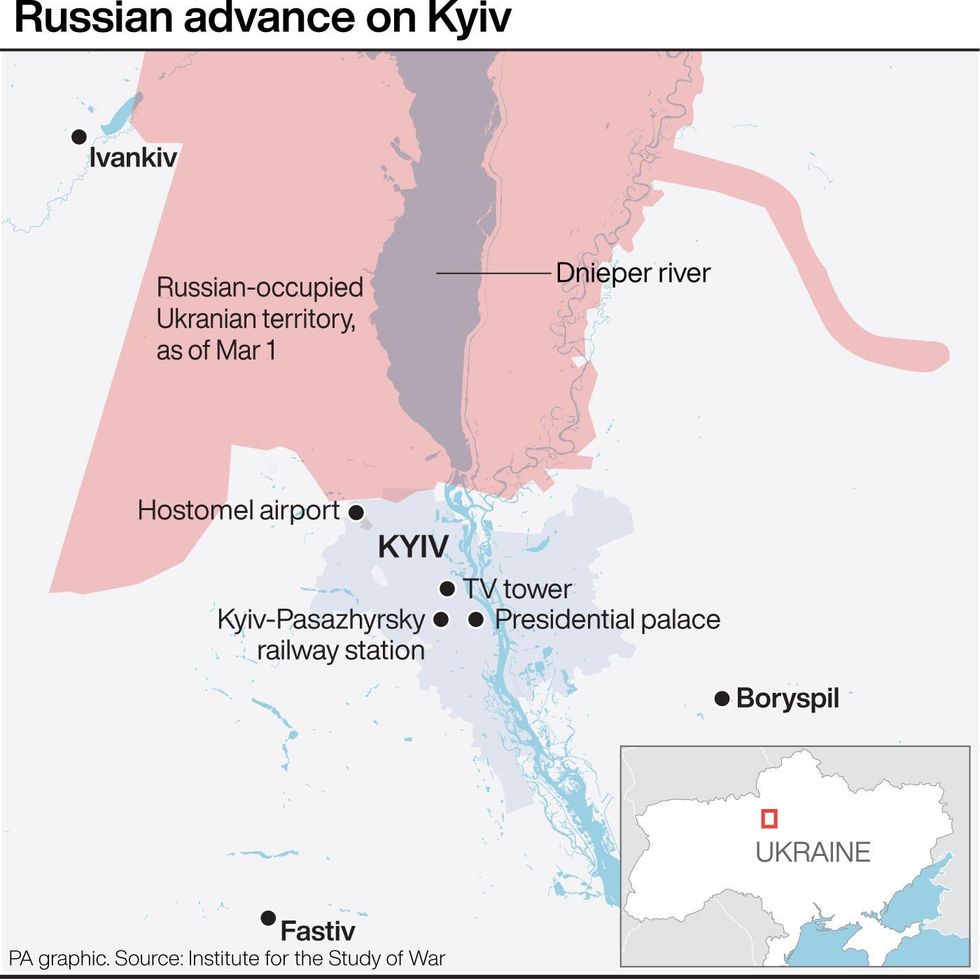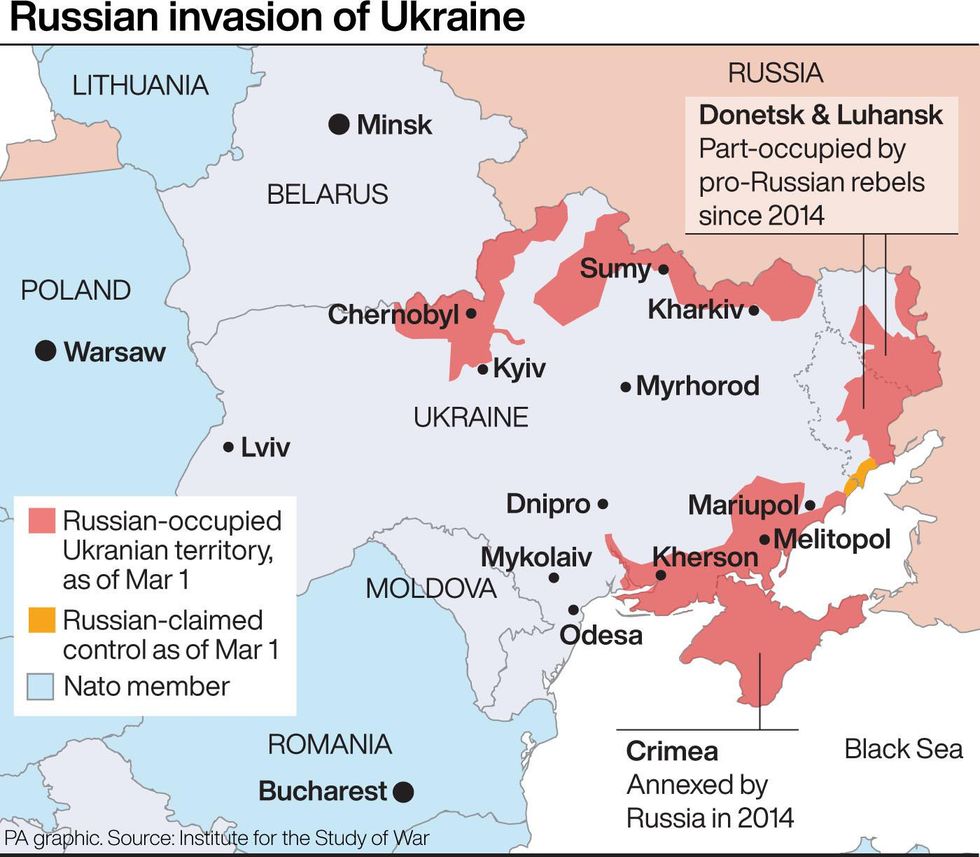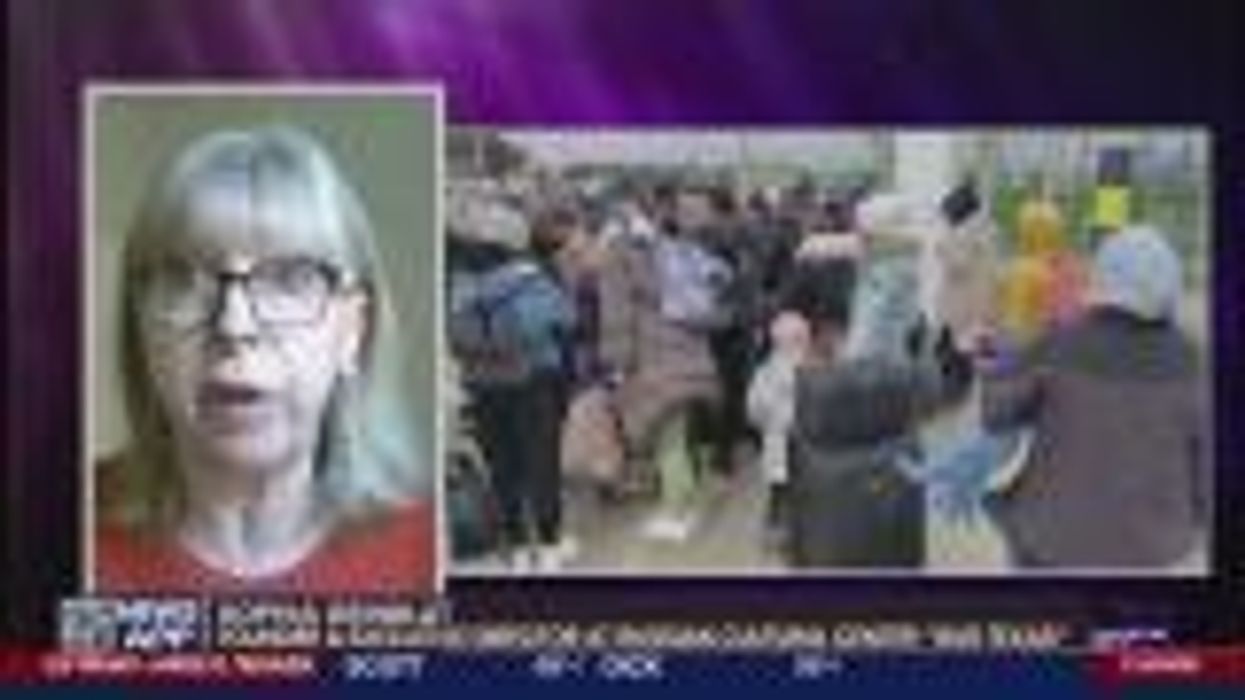Russia launched an attack on Ukraine last week, stoking fears of a Third World War.
In that time, Russian troops have made significant advances, but have yet to capture the country’s major cities.
UK defence secretary Ben Wallace said Russian president Vladimir Putin knows “no limit” and will seek to “pummel” cities in tactics reminiscent of medieval siege warfare.
Last week, tensions were stoked when Putin recognised the rebel-held regions of Donetsk and Luhansk in the Donbas as independent states.
Just a few days later, Russia announced war on Ukraine and on Friday, seized control of the area surrounding the Chernobyl nuclear reactor.
Russia warned residents of Kyiv to leave their homes as they threatened “high-precision” strikes on the capital.
Boris Johnson fears Vladimir Putin may wish to “Grozny-fy” Kyiv as a 40-mile-long convoy of hundreds of Russian army vehicles advance on the city.
Sign up to our new free Indy100 weekly newsletter
Johnson’s “Grozny-fy” remark is in reference to the way Russian forces flattened the city during the Second Chechen War in 1999-2000.
Kyiv mayor Vitali Klitschko this morning told residents that Russian troops are drawing closer to the capital. In a Telegram message, he advised residents to remain sheltered underground and added: “We are preparing and will defend Kyiv! Kyiv stands and will stand. We will fight!”
Five people died and another five were injured after Russia attacked a television tower in Kyiv and the Babyn Yar Holocaust Memorial. The memorial marked the site where 33,000 Jews were executed by Nazis over two days in September 1941. An estimated 100,000 people were murdered at Babyn Yar during World War II.

In the northeast, reports from this morning state that Russian troops have landed in the country’s second-largest city, Kharkiv.
At least 25 people are thought to have been killed and a further 121 injured after Russian paratroopers attacked the city overnight and on Wednesday morning.
The UK Ministry of Defence said the latest intelligence suggested Russian forces had reportedly moved into the centre of Kherson in south Ukraine.
Artillery and air strikes have targeted built-up areas in Kyiv, Kharkiv, Mariupol and Chernihiv.
Wallace said the advance of Russian forces continued to be slowed by a combination of overstretched logistics, poor morale and brave resistance by Ukrainian fighters.

“The Russians are considerably behind their schedule, by days not hours, and that leads to stresses on their logistical supply chains,” he told the BBC.
“That’s why you have seen some of these columns fairly grind to a halt. They have also been surprised by the strength of the Ukrainian resistance.”
He told BBC Breakfast that “none of the major cities have been taken control of”.
There was “huge amounts of low morale in the Russian forces, we’ve seen lots of surrenders”.
“But that doesn’t take away from the fact you have a very ruthless Russian armed forces leadership and a president who seems to know no limit to how much violence they will use to achieve their aims.”
The lack of progress in meeting the aims of the invasion had led to a change in tactics, focusing on aerial and artillery bombardment of cities rather than the kind of lightning mobilised armoured advances originally envisaged by the Kremlin, Western military experts believe.
Wallace told Sky News that meant a plan to “carpet-bomb cities, indiscriminately in some cases” and on BBC Radio 4’s Today Programme he warned they would “pummel these cities with artillery and then hope to break the city”.
He told the BBC that siege tactics were in the Russian military doctrine, with forces surrounding a city before they “bombard it indiscriminately and then eventually close in on a population that they hope to have broken, and indeed take over what’s left of the city”.
“We’ve seen that in Chechnya before,” he said.
But Ukraine was a different proposition because of its size and population.
He warned that an occupying force would face the kind of insurgency faced by the Soviets in Afghanistan or the UK and Western allies in Iraq.
“Invading a country with overwhelming force is one thing, occupying a people of 44 million who don’t want you in – it is a very different thing.”
There could be “years of resistance” to a Russian occupation, he said.
Putin previously annexed Crimea from Ukraine in 2014.
To learn more about the war, we’ve explained the conflict using three key maps and graphs.
For more Ukraine news, follow The Independent's live blog.
Learn more aboutThe Independent's Refugees Welcome campaign.
Have your say in our news democracy. Click the upvote icon at the top of the page to help raise this article through the indy100 rankings.














